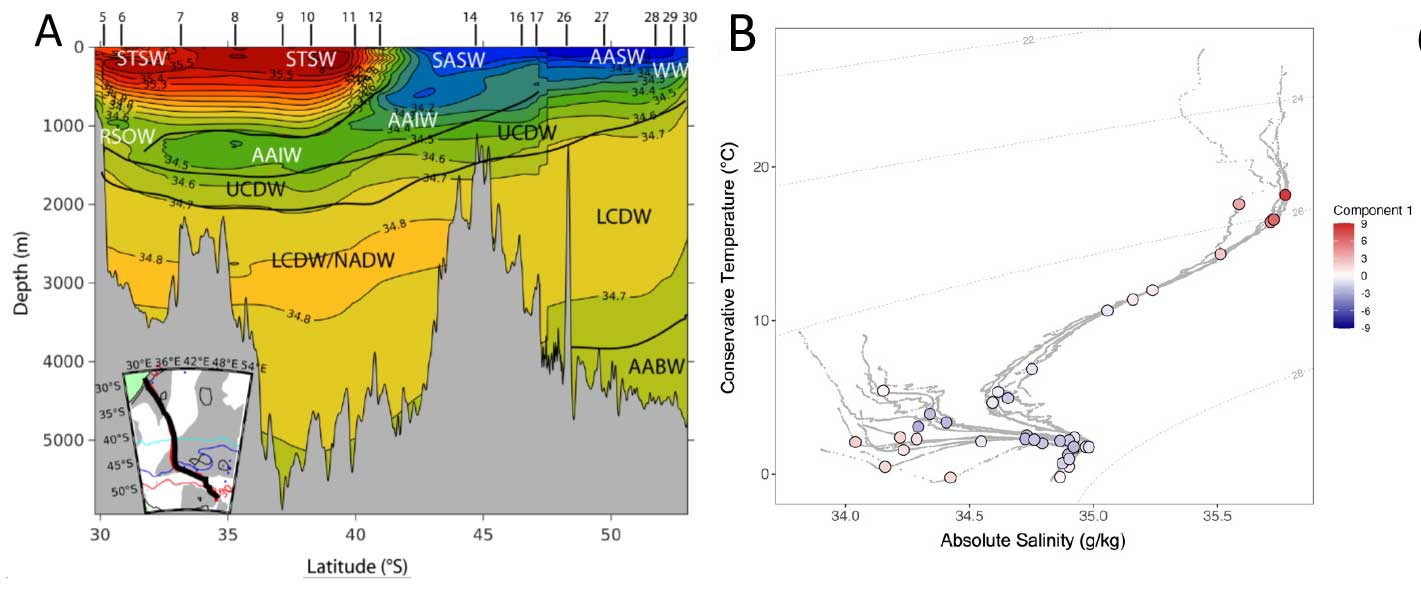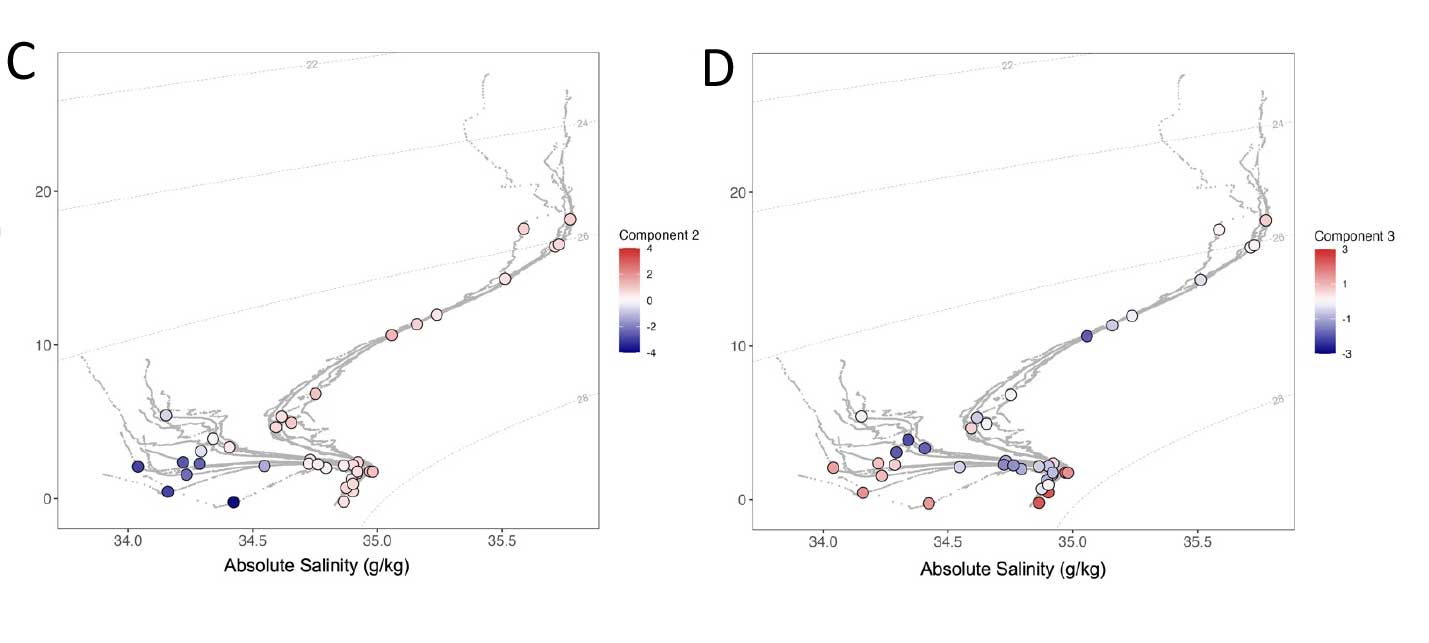When covariance of trace metals and prokaryotic taxa are tagging water masses (Southern Indian Ocean)
Although recognised key for biogeochemical processes, the interplay between bioactive trace metals and marine microbes still remains largely unexplored. Zhang et al. (2024, see reference below) investigated the potential reciprocal links between diverse prokaryotic taxa (16S rRNA gene sequencing) and concentrations of dissolved iron (Fe), manganese (Mn), copper (Cu), and nickel (Ni) as well as apparent oxygen utilisation across 12 well-defined water masses in the Indian Sector of the Southern Ocean (SWINGS, GEOTRACES GS02 Section cruise). A refined statistical co-analysis (Partial Least Squares Regression) of the relative abundance of abundant microbial taxa and the distribution of trace metals revealed clear biogeochemical signatures of distinct water masses. These ‘biogeo’ gradients, that are a combination of the spatial distribution of microbial taxa and trace metals, provide a novel perspective, and opens insights on the potential interactions between abundant microbial taxa and trace metals in relation to organic matter remineralisation in the ocean.


Reference:
Zhang, R., Blain, S., Baudet, C., Planquette, H., Vivier, F., Catala, P., Crispi, O., Guéneuguès, A., Marie, B., Debeljak, P., & Obernosterer, I. (2024). Tagging of water masses with covariance of trace metals and prokaryotic taxa in the Southern Ocean. Limnology and Oceanography Letters, 9, 776–784. Access the paper: 10.1002/lol2.10429
